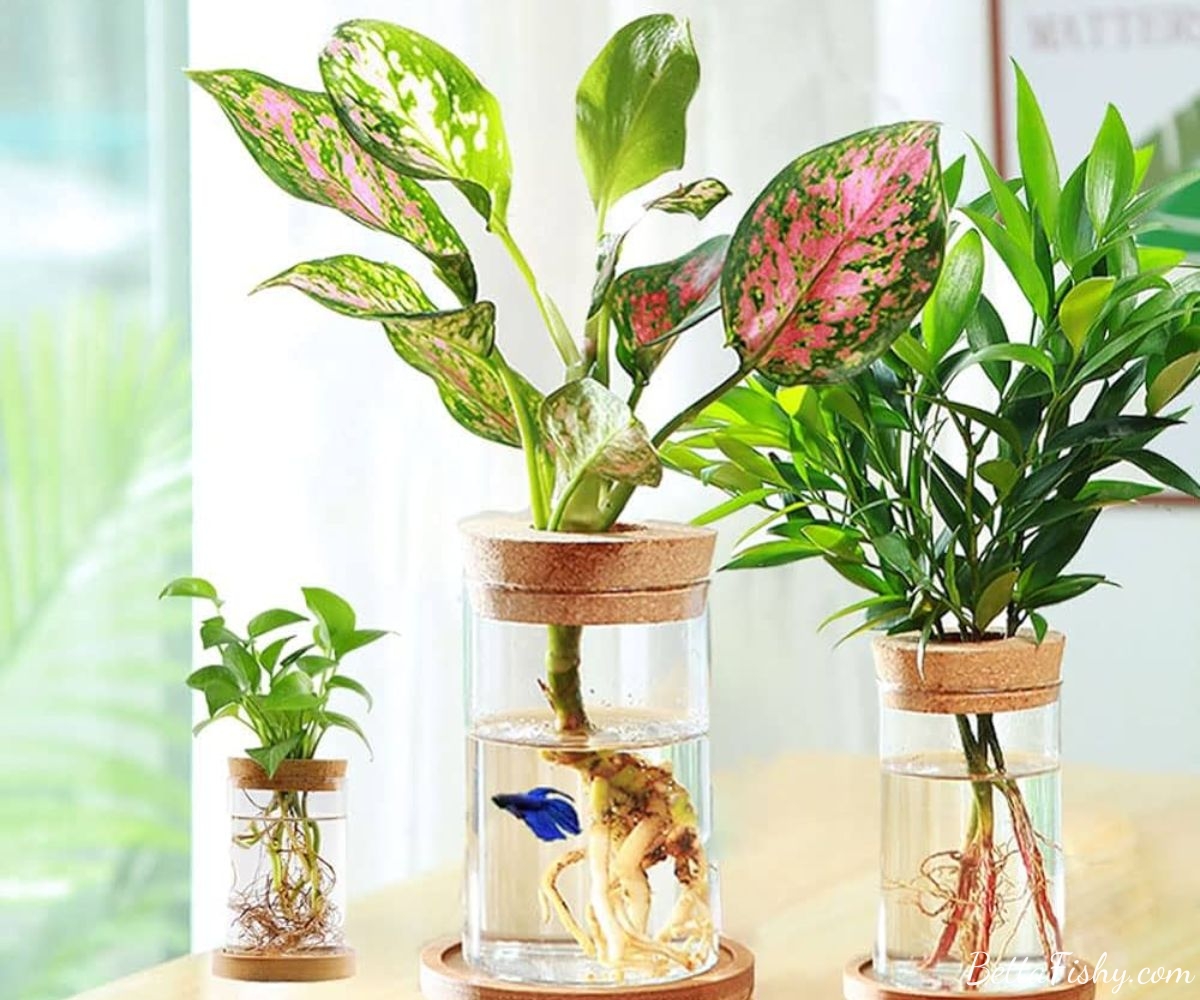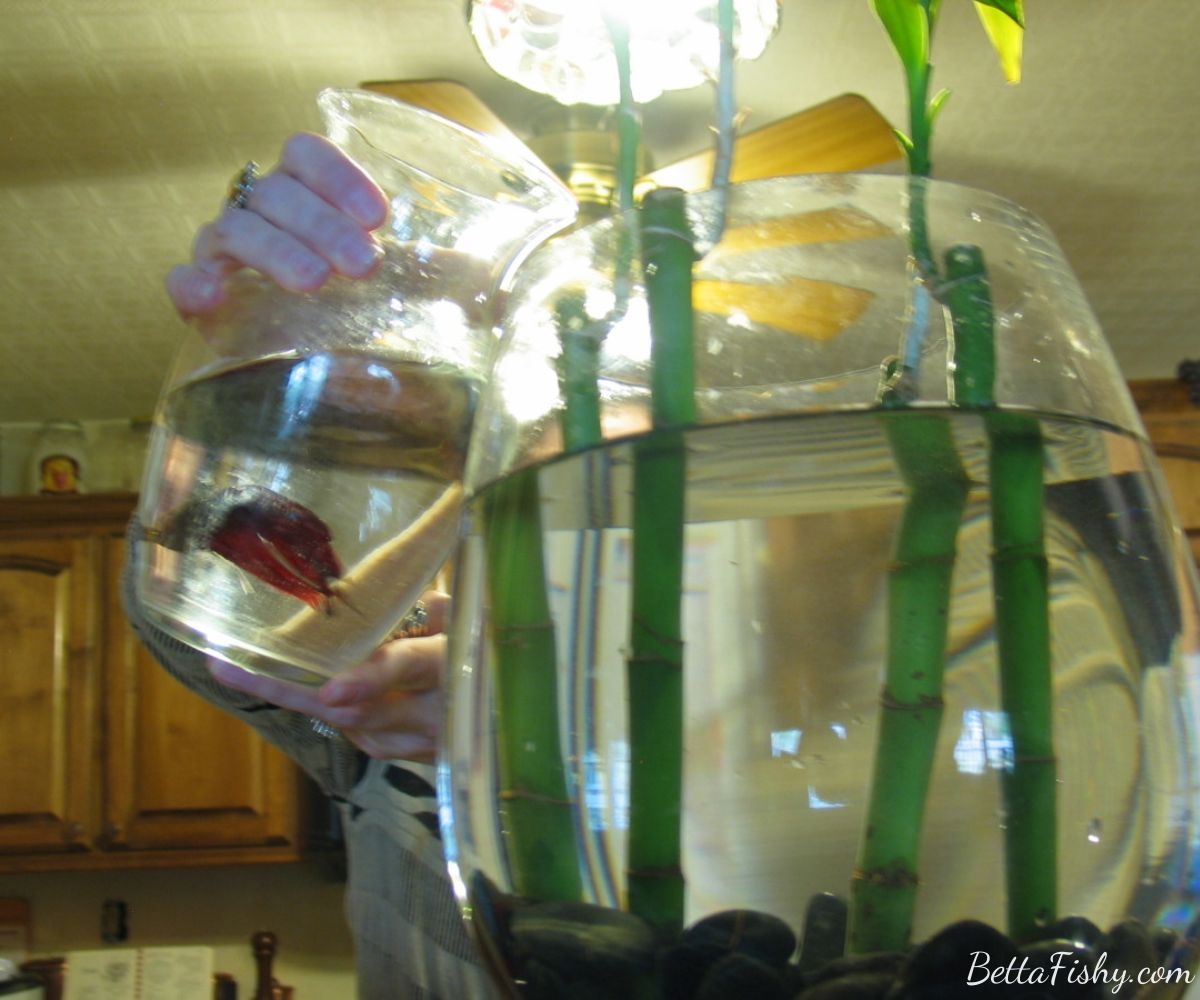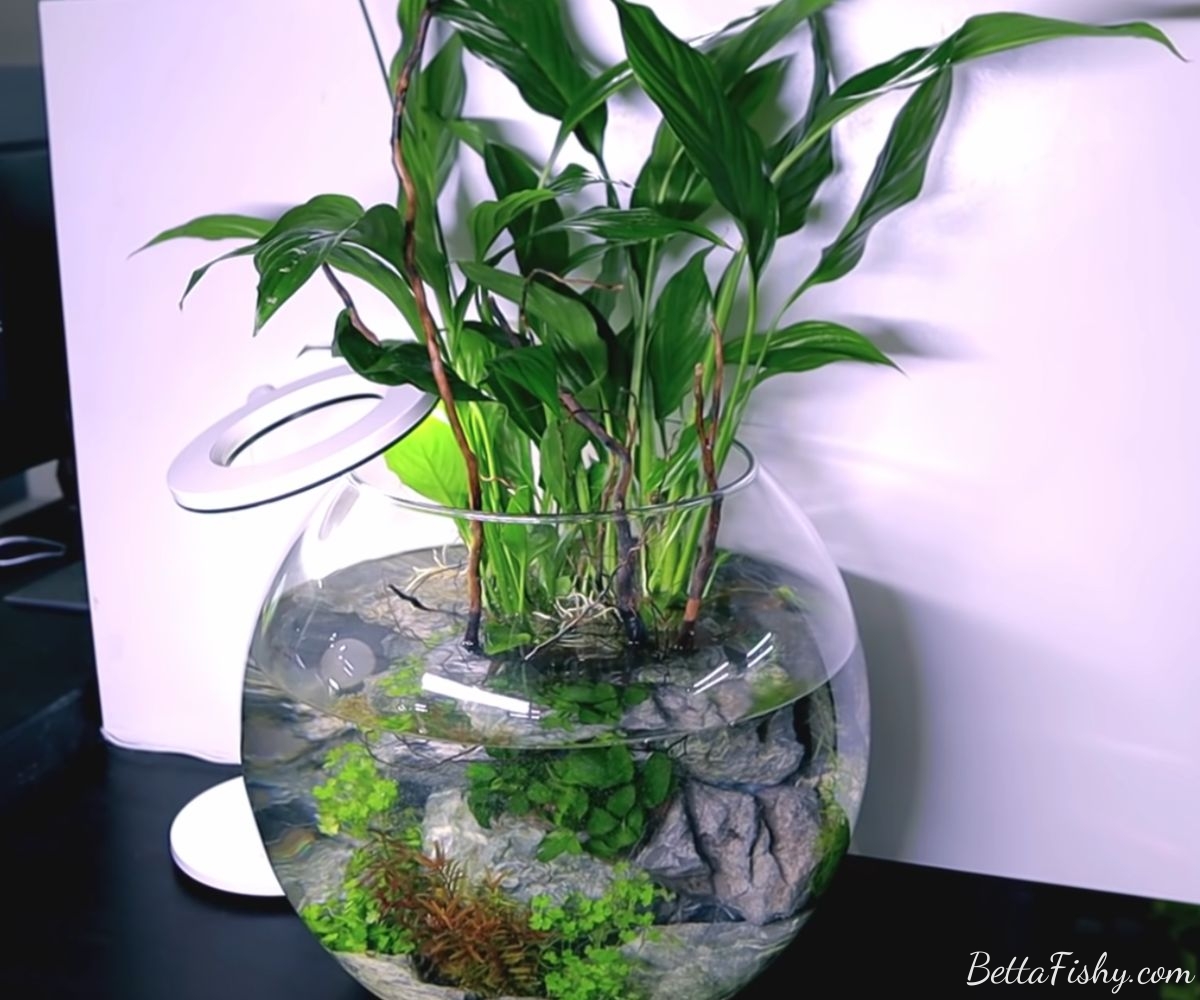Introduction
The Betta Fish Plant Vase isn’t just another pretty addition to your home; it’s a living-breathing piece of art that adds life and movement to even the most static corners of your room. These vases are more than mere fish tanks; they’re tiny ecosystems where vibrant bettas flourish amidst lush greenery However, there is an ongoing debate over whether this type of setup provides an appropriate habitat for bettas. While some argue that betta vases are a creative way to display these fish, others raise concerns over the limited space and potential water quality issues. So follow BettaFishy to find out if this luxurious house is suitable for your fish.
The Advantages of a Betta Fish Plant Vase!
One of the main pros of betta fish plant vase is that it provides a simple, low maintenance habitat. Vases require less equipment and setup than a traditional tank. You don’t need filters, heaters or air pumps for a basic betta vase. The simplicity makes betta vases a lower-cost option compared to purchasing and installing a full aquarium kit.
Maintenance is also more minimal with a betta vase. Small water changes can be done by simply emptying and refilling a portion of the vase. Gravel vacuuming and scrubbing is not needed. The smaller water volume also means less water to heat, condition and monitor.
Another advantage cited for betta vases is their aesthetic appeal. The small size allows them to fit nicely on a desk or counter. Choosing a stylish vase and coordinating plant can create an artistic living decoration. The tranquil view of a betta swimming through a lush plant provides a calming ambiance.
The Dark Side of Raising Fish in Betta Fish Plant Vases
While aesthetically pleasing, keeping bettas in vases presents some significant drawbacks for the health and wellbeing of the fish.
One major concern is the limited space in a vase. The confined area can restrict the normal range of movements for a betta and lead to problems like fin damage or unnecessary stress.
Another issue is the challenge of maintaining proper water quality in a small vase. The limited water volume makes it prone to fluctuations in parameters like ammonia, which bettas are sensitive to. Without a filter, one must be vigilant about frequent 100% water changes.
Lastly, temperature regulation can be difficult. Bettas require warm tropical temperatures around 76-82°F. But the small water volume of a vase makes it hard to maintain a stable appropriate temperature. Sudden temperature drops can shock the betta’s system.
The Tip of Keeping Happy Bettas in a Green Space
Choosing a Vase

When selecting a vase for a betta fish habitat, the size and shape are important considerations. The minimum recommended size for a betta vase is 5 gallons. This allows enough room for the betta to swim and explore. Smaller vases under 3 gallons severely limit space and water volume.
The shape of the vase also matters. Bettas prefer wider containers as opposed to tall, narrow vases. A vase with a wider base provides more surface area for the betta to swim and access the surface for air. Round vases are better than square since they don’t have sharp corners the betta could get stuck in.
Vases made of glass or acrylic are ideal. Avoid materials like plastic that could leach chemicals into the water. Thicker glass is better as it will be more stable and hold heat better. Be sure to pick a simple, smooth vase without decorations or patterns on the inside that could snag the betta’s fins.
Selecting a Plant
When choosing a plant for a betta fish vase habitat, it’s important to select species that can thrive in the aquatic environment. Some great options include:
Java Fern – This hardy plant has broad leaves and whisker-like roots that provide hiding spots for bettas. It handles low light well. Attach to vase with fishing line or super glue, don’t bury in substrate.
Anubias – A tough plant with broad, green leaves on a short stem. Anubias nana is a compact variety perfect for betta vases. Anchor the roots but keep rhizome above substrate.
Marimo Moss Balls – Soft, spherical moss balls that gently roll around the vase. They require low maintenance and absorb waste from the water.
Planting in a vase is easy. Select plants designed to be fully submerged. Trim any dead parts and rinse well. Gently place in the vase, using fishing line or glue to secure plants that attach to hard surfaces like Java Fern. Make sure not to bury aquatic plants too deeply in substrate. The vase should allow light to penetrate and promote plant growth.
Water Changes & Maintenance

For betta vases without filters, frequent water changes are crucial to maintain good water quality. The general recommendation is to change out 25-50% of the water at minimum twice per week. For example, if your betta vase holds 1 gallon of water, you would need to replace 0.25-0.5 gallons twice weekly. With a planted vase, you may be able to get away with slightly less frequent changes.
Before adding fresh water, you’ll want to test and condition it. Use test kits to check levels of ammonia, nitrites, and nitrates, which can build up over time and become toxic. Ideal levels are 0 ppm for ammonia and nitrites and <20 ppm nitrates. Use water conditioner to remove chlorine and heavy metals present in tap water that could harm your betta. Popular betta water conditioners include API Tap Water Conditioner, Tetra BettaSafe, and Seachem Prime.
When performing water changes, avoid completely replacing all the water at once. Bettas prefer stable conditions and are sensitive to rapid changes. Introduce the new water slowly over at least 30 minutes. Use a clean turkey baster to siphon out old water and add fresh water.
Ideal Water Conditions
Bettas are tropical fish that require specific water conditions to thrive. The two most important parameters to maintain are temperature and pH.
Bettas prefer water temperatures between 75-82°F (23.8-27.2°C). Temperatures cooler than 75°F can compromise their immune system and make them prone to disease. A heater is highly recommended to keep the water temperature consistent. Fluctuating temperatures can cause stress.
Bettas thrive in slightly acidic water with a pH between 6.0-7.0 pH lower than 6.0 can harm their labyrinth organ, which allows them to breathe air. Tap water typically falls within the ideal pH range, but testing regularly is important. API makes reliable pH test kits for aquariums.
Other Habitat Components

In addition to the vase and plant, there are a few other elements you can add to create a more enriched betta vase habitat. While a bare vase with just water and a plant can work, including substrate, decorations, and hiding spots provides a more stimulating environment for your betta.
Many betta enthusiasts recommend adding aquarium gravel, marbles, or glass beads to the bottom of the vase as substrate. This serves a few purposes – it provides an anchor for the plant’s roots, beneficial bacteria can grow on it to aid the nitrogen cycle, and it gives the betta something else to explore in the limited vase space. Be sure to rinse any substrate well before adding it. Smooth pebbles or marbles work well in vases so the betta won’t scratch its fins.
You can also include rocks, caves, or terracotta pots in the vase for hiding spots. Bettas appreciate having some covered areas to retreat to for security and relaxation. Just be sure any caves or pots have smooth edges with no sharp corners that could tear fins. Silk plants in addition to the live one can provide more cover as well.
Limiting decorations is usually recommended for betta vases to avoid overcrowding the small water volume. But small, simple accents like a betta hammock leaf or floating betta log can enrich the habitat if positioned thoughtfully. Avoid crowding the vase with too many accessories. The plant, substrate, and a hiding spot or two are often all that’s needed in these minimalist betta homes.
Feeding Bettas in Vases
Since bettas in vases have limited space, it’s important not to overfeed them. Overfeeding can quickly dirty the water and make them ill. Most experts recommend feeding bettas in vases once or twice a day, no more than they can eat within 2 minutes.
The best diet for bettas in vases is high quality pellets or flakes, since they won’t dirty the water as much as freeze-dried or live foods. Aim for 1-3 small pellets twice daily. If feeding flakes, only a small pinch once or twice a day. Avoid freeze dried foods like bloodworms which can foul the small water volume. Betta pellets provide balanced nutrition.
Remove any uneaten food to keep the water clean. Adjust feeding amounts based on the betta’s appetite and watch for signs of bloating. With proper portions, the diet should provide complete nutrition in a vase home.
Conclusion
In conclusion, a Betta Fish Plant Vase is not just a chic addition to your home decor but also a thriving environment for your aquatic friend. This dual-purpose piece combines aesthetics and functionality in the most innovative way. Moreover, it offers an opportunity to foster a closer bond with nature as it requires regular maintenance of both the plant and the fish. However, it’s crucial to ensure that all aspects of care are met for both these living things. If you’re ready for this unique pet-plant partnership, consider adding a Betta Fish Plant Vase to your space and witness the enchanting union of botany and marine life right in your living room!


